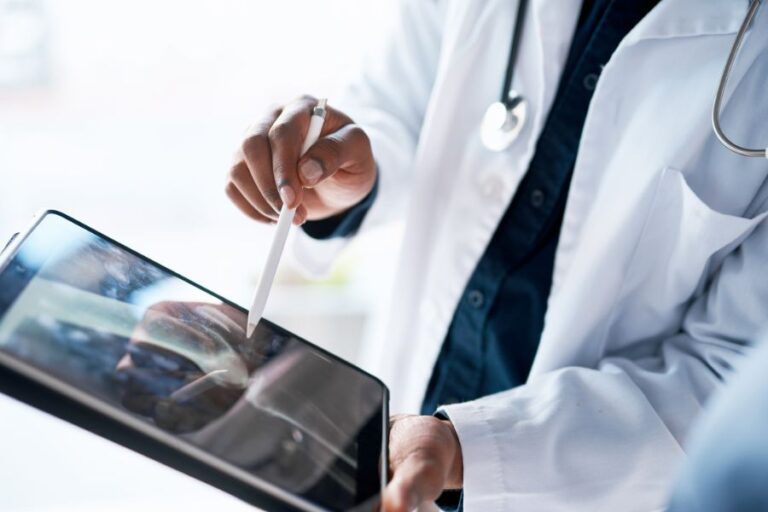In the world of EMS, data matters. Yet despite nearly 30 years since HIPAA became law, a persistent myth lingers that EMS can’t receive patient outcome data from hospitals. In our recent webinar, Captain Steve Hartman of Fairfax County Fire & Rescue tackled this myth head-on and showed how EMS can leverage technology and partnerships to improve care, close communication loops, and reduce administrative burden.
Here’s a breakdown of the conversation, what your agency can take away, and how the right tools (like ImageTrend’s Health Information Hub™) can support meaningful, real-time data exchange between EMS and hospitals.
HIPAA Doesn’t Prevent Data Sharing, It Enables It
One of the biggest misconceptions Captain Hartman addressed is that HIPAA is a barrier to sharing data. In reality, HIPAA explicitly allows data sharing for three key reasons: treatment, payment, and healthcare operations.
This includes everything from delivering prehospital care to submitting claims and conducting quality improvement reviews. That means you don’t need to collect a patient signature to receive outcome data, so long as it’s used for a permitted purpose.
What ImageTrend’s Health Information Hub Does for EMS
ImageTrend’s Health Information Hub (HIH) is designed to support this kind of real-time, compliant data sharing. When integrated with your hospital partners, HIH allows:
- Automatic ePCR submission to the patient’s chart—often within 90 seconds.
- Alerts to the ED when a patient is en route.
- Outcome and diagnosis data are sent directly back to the EMS record.
- Billing information exchange for smoother claims and payment processes.
Fairfax County uses HIH to send patient care reports directly into hospital EHRs, and in return, receive HL7 data back into their ImageTrend Elite™ records. This means EMS providers can access diagnosis codes, disposition details, and other outcome data almost immediately after transport.
“Being able to drop a patient off at the hospital, post the ePCR, and then within an hour or so be able to see what the diagnosis was, does wonders for closing a loop,” said Hartman.
Real-Time Feedback and Quality Improvement
Before implementing HIH, Fairfax’s quality assurance team was manually contacting hospitals to get follow-up information, a process that took more than 40 hours a week. Now, outcome data arrives automatically and populates a dashboard built with ImageTrend’s Data Mart.
This closed-loop system helps with:
- Provider education and training
- Confirming primary impressions
- Monitoring over- or under-triage trends
- Infection exposure notifications
“We set up real-time alerts when patients we transported later tested positive for COVID or other infectious diseases,” Hartman shared. “That sometimes was delayed by several days. Now, it happens in a matter of minutes to a matter of hours.”
How Hospitals Also Benefit from Health Information Hub
This data exchange isn’t just a one-way street. Hospitals can also benefit from HIH integration by:
- Receiving patient information before the ambulance arrives
- Meeting accreditation standards for trauma, STEMI, and stroke programs
- Saving time by eliminating manual scanning or faxing of ePCRs
- Reducing delays in EMS billing requests
And because HIH supports bidirectional data exchange, hospitals can embed EMS reports into their EHRs while simultaneously returning diagnosis and payer information to EMS.
Extending the Value of Data Sharing
Building strong hospital relationships for data exchange takes time, and intention. Captain Harman emphasized the importance of a “carrot, not stick” approach, focusing on mutual benefits rather than legal demands. Hospitals aren’t required to share information under HIPAA, but they’re absolutely allowed to, and many stand to benefit from doing so.
To help make the case, Hartman pointed to federal guidance that supports EMS data integration. One key resource is the ONC’s “Integrating Emergency Medical Services into Health Information Exchanges” white paper, which highlights EMS as a vital part of the health data ecosystem.
Additionally, EMS Agenda 2050 recognizes bidirectional data exchanges as a foundational element in delivering people-centered care. And the benefits go far beyond the emergency department handoff.
With ImageTrend’s HIH, agencies can:
- Support community paramedicine programs with access to patient histories, allergies, and medications on scene.
- Exchange data with mutual aid partners, even across different software vendors, as long as they’re NEMSIS 3.5 certified.
- Equip emergency call takers with outcome information, helping them feel more connected to the patients they assist.
Whether you’re transporting a patient, responding to a frequent caller, or working across jurisdictions, data sharing empowers your entire team to deliver smarter, more informed care.
The Bottom Line
Secure, real-time data exchange between EMS and hospitals is not only possible, it’s already happening. With tools like HIH, agencies can reduce administrative strain, support their providers, create a strong feedback loop, and improve care in the communities they serve.
Want to hear more directly from the field? Watch the full webinar featuring Captain Steve Hartman of Fairfax County Fire & Rescue to see how his team uses HIH to streamline provider operations and build stronger hospital partnerships.
To discover how your agency can uniquely benefit from HIH, contact our team of experts for a demo.




